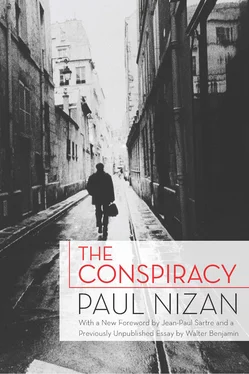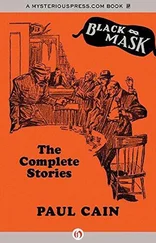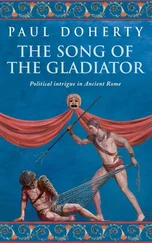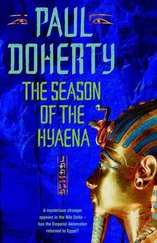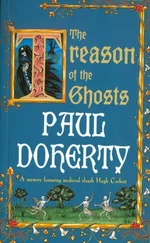Page 11 Théodore Fantin-Latour (1836–1904) and Pascal Dagnan-Bouveret (1852–1929) were both best known as society portrait painters.
Page 12 Irish seminarists: the Collège Irlandais still stands in Rue des Irlandais, off Rue Lhomond.
Gare: the Gare d’Austerlitz.
Page 13 Wednesday: a free day in the French educational system.
Page 21 Henri-Joseph-Eugène Gouraud (1867–1946), a distinguished First World War general, served as military governor of Paris from 1923 to 1937.
Page 22 The Belfort Lion, commemorating the successful defence of Belfort in 1870–71, was erected in 1880 on Place Denfert-Rochereau, named after the commanding officer during the siege.
André Tardieu (1876–1945), a minister in Poincaré’s government in 1928, was himself to become Prime Minister for the first of three terms in November 1929.
Page 29 Poincaré, at this time (1928) Prime Minister, had been President of the Republic from 1913 to 1920.
Théophile Corret de la Tour d’Auvergne (1743–1800) distinguished himself in the Revolutionary Wars, refused promotion beyond the rank of captain in the grenadiers, and was killed at the Battle of Oberhausen in Bavaria.
Sadi Carnot (1837–1894), grandson of Lazare C. who organized the armies of the French Revolution, was President of the Republic from 1887 until his assassination by an anarchist at Lyon.
Marcelin Berthelot (1827–1907) was an eminent chemist and political figure, father of the philosopher René and the politician Philippe C.
Comte Timoléon de Cossé-Brissac (1775–1848), scion of an old aristocratic family, was created a count of the Empire in 1812.
Comte Jean-Marie-François Lepaige-Dorsenne (1773–1812) was a Napoleonic general who distinguished himself especially in Spain and died of his wounds.
The Doctrinaires were a political grouping founded under the Restoration by Pierre-Paul Royer-Collard and François Guizot. Their aim was to give some philosophical foundation to a middle-of-the-road policy of constitutional monarchism, rejecting both popular sovereignty and divine right of kings. Their ideas found expression after 1830 in the July Monarchy.
Page 30 Pierre Casimir-Périer (1777–1832), rich banker and politician, Minister of the Interior under the July Monarchy.
Jean-Paul-Pierre Casimir-Périer (1847–1907), diplomat and politician, President of the Republic 1894–95.
The Chapelle Expiatoire in Boulevard Haussmann was erected under the Restoration, on the site of a small cemetery that had received the bodies of 1,343 victims of the guillotine on Place de la Concorde during the French Revolution, including those of Louis XVI and Marie Antoinette.
Page 31 Albi is the provincial capital and main railway centre of the Tarn département , where Jaurès was first buried at his birthplace, Castres. Les Aubrais is a railway junction near Orléans.
Lucien Herr (1864–1926), librarian, from 1888 until his death, of the Ecole Normale Supérieure. A socialist, he influenced successive generations of normaliens , and among others Jaurès and Blum. A prominent supporter of Dreyfus, in 1904 he was among the founders of L’Humanité , then an organ of the Socialist Party.
Lucien Lévy-Bruhl (1857–1935), philosopher and social theorist, whose best-known works are concerned with the thought systems of ‘primitive’ societies.
Palais-Bourbon: seat of the National Assembly.
Page 37 Rodin’s Thinker , now in the Musée Rodin in Hôtel Biron, in the twenties stood in front of the Panthéon.
Page 38 The Unknown Philosopher: Louis-Claude de Saint-Martin (1743–1803), a mystical (and often obscurantist) ‘illuminist’ philosopher influenced by freemasonry and theosophy.
Rabbi ben Ezra: Abraham ben Meir Ibn Ezra (1098–1164) Jewish poet, philosopher, grammarian, astronomer and biblical critic, born in Spain, the inspiration for Robert Browning’s poem ‘Rabbi Ben Ezra’.
Page 41 Clarté was a novel published in 1919 by the pacifist socialist Henri Barbusse, who in November of that year founded a journal with the same title, with an associated international committee including such well-known names as Anatole France, Georges Duhamel, Jules Romains, Upton Sinclair, H.G. Wells and Stefan Zweig.
Page 42 See Lenin, Collected Works , vol. 33, p. 113.
Page 44 Doktorklub: graduate discussion club at Berlin University in the 1830s and ’40s which formed the focal point of the Young Hegelian movement, and in which Marx worked out his early views on philosophy and society. The epigram is taken from a satirical poem by Friedrich Engels and Bruno Bauer’s brother Edgar, ‘The Triumph of Faith’, and reads: ‘Our actions are just words, and long they so shall be./ After Abstraction, Practice follows of itself.’ (Marx/Engels, Collected Works , vol. 2, p. 338).
Page 45 La mobilisation n’est pas la guerre: these words are taken from the proclamation accompanying the order of general mobilization on 1 August 1914, signed by President of the Republic Raymond Poincaré, but drafted by Premier René Viviani.
The Gazette du Franc was a financial weekly founded in 1925, which collapsed in 1928.
Page 46 Jean Chiappe (1878–1940) was Prefect of Police in Paris from 1927 to 1934. Known for his far-right sympathies, in 1940 he was appointed High Commissioner in Syria by the Vichy regime, but the plane taking him there was shot down by the RAF.
Page 49 Dolgoruky is the main character in Dostoievsky’s A Raw Youth .
Page 51 The Vexin was a historic French province, overlapping the border between the modern départements of Seine-et-Oise and Eure: Pontoise was the centre of Vexin Français, Gisors of Vexin Normand.
Page 54 Edouard Herriot (1872–1957), leader of the Radical-Socialists, had lost in 1925 a premiership he was not to regain until 1932.
Philippe Berthelot (1866–1937) was Secretary-General of the Foreign Ministry 1920–33, exerting great influence over successive ministers.
Page 56 ‘Acquiescence in oneself’ is a principal theme of the last two. books of Spinoza’s Ethics .
Page 61 The Broglie: Place Broglie.
Page 61 Anglo-French glasses: the allusion to a couplet from Alfred de Musset’s ‘Le Rhin allemand’:
Nous l’avons eu, votre Rhin allemand;
Il a tenu dans notre verre.
Gabriel Alapetite (1854–1932) was Commissioner-General of the Republic (or de facto Governor) in Alsace-Lorraine, from the time of its transfer from Germany in 1918 until 1924.
Etienne-Alexandre Millerand (1859–1943) was War Minister from 1915 until the Armistice, and became Prime Minister briefly in 1920, before becoming President of the Republic (1920–24).
Page 62 The speech of Touraine is commonly regarded as providing the closest thing to standard French ( mutatis mutandis roughly equivalent to Hanover German, Tuscan Italian or Oxford English).
Common sense. . a quotation from Descartes’ Discourse on Method .
Page 66 The Fosse: Quai de la Fosse.
At the Ecole des Chartes for librarians and archivists, Simon would have studied diplomatics or the science of documentary analysis — in contradistinction to the diplomacy which, for the sake of the pun, Nizan ascribes to the curriculum of the Ecole des Sciences Politiques.
Page 72 ‘Alain’: pen-name of Emile-Auguste Chartier (1868–1951), a product of the Ecole Normale Supérieure and the most influential philosophy teacher in France during the inter-war years, especially thanks to his prolific essays. His main emphasis was on education of the will, creating a personality for oneself that is the product of self-conscious and rational effort.
Читать дальше
